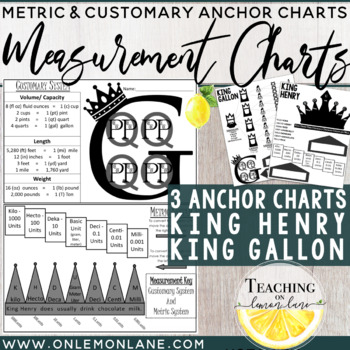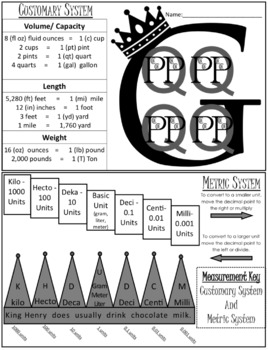Measurement Conversion Anchor Chart: Metric & Customary System (ie: King Gallon)
- Zip
What educators are saying
Description
I quickly found out how important a solid anchor chart is after teaching measurement in my own classroom. There is also value in having the units displayed differently. This is a wonderful resource that students can use as a fold able or simply glue in to their math interactive notebook. You can cut this anchor chart in half and give the student the customary measurement chart as you teach, and then the metric system as you teach it. Or just keep as is. This chart includes the most commonly used units of conversion in measurement. It includes measurements of weight, capacity, and length. I hope this printable aids your classroom as much as it has mine! Let me know what you think. I love your feedback. Especially to hear how you used it, what you might change or even add to it to make it a more effective tool. THANKS
- This product has been updated to include 2 more Measurement Anchor Charts, 3 Customary and Metric Posters total.
This measurement chart also includes a wonderful easy to read illustration of King Gallon. My students love the story of King Gallon to remember how to convert units of capacity. Then we enjoy using the story of King Henry to remember how to use the metric system. We use King Henry's crown to remember how to move the decimal.





